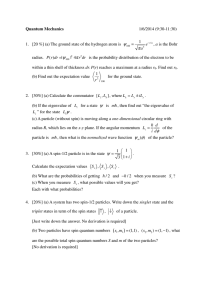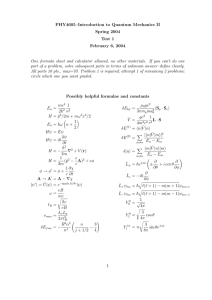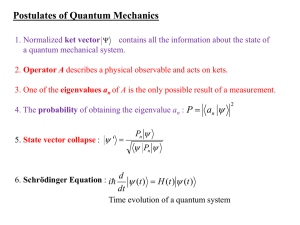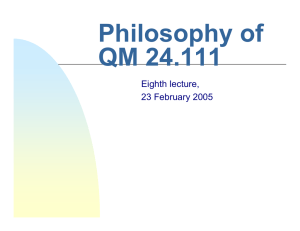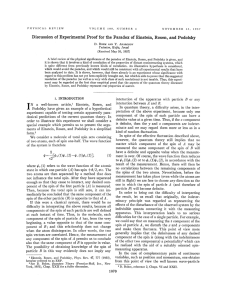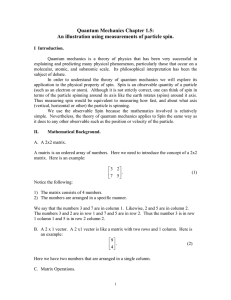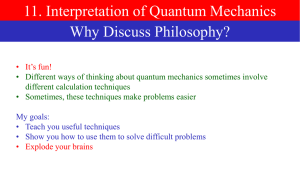24.111 Philosophy of QM Spring, 2005
advertisement
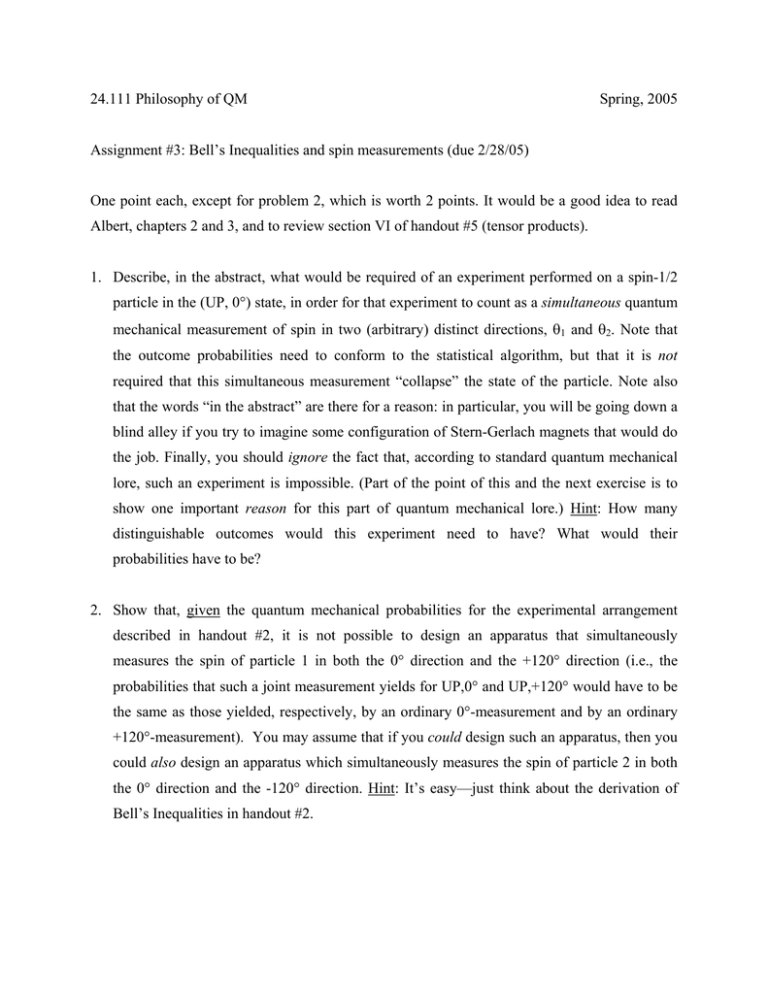
24.111 Philosophy of QM Spring, 2005 Assignment #3: Bell’s Inequalities and spin measurements (due 2/28/05) One point each, except for problem 2, which is worth 2 points. It would be a good idea to read Albert, chapters 2 and 3, and to review section VI of handout #5 (tensor products). 1. Describe, in the abstract, what would be required of an experiment performed on a spin-1/2 particle in the (UP, 0°) state, in order for that experiment to count as a simultaneous quantum mechanical measurement of spin in two (arbitrary) distinct directions, θ1 and θ2. Note that the outcome probabilities need to conform to the statistical algorithm, but that it is not required that this simultaneous measurement “collapse” the state of the particle. Note also that the words “in the abstract” are there for a reason: in particular, you will be going down a blind alley if you try to imagine some configuration of Stern-Gerlach magnets that would do the job. Finally, you should ignore the fact that, according to standard quantum mechanical lore, such an experiment is impossible. (Part of the point of this and the next exercise is to show one important reason for this part of quantum mechanical lore.) Hint: How many distinguishable outcomes would this experiment need to have? What would their probabilities have to be? 2. Show that, given the quantum mechanical probabilities for the experimental arrangement described in handout #2, it is not possible to design an apparatus that simultaneously measures the spin of particle 1 in both the 0° direction and the +120° direction (i.e., the probabilities that such a joint measurement yields for UP,0° and UP,+120° would have to be the same as those yielded, respectively, by an ordinary 0°-measurement and by an ordinary +120°-measurement). You may assume that if you could design such an apparatus, then you could also design an apparatus which simultaneously measures the spin of particle 2 in both the 0° direction and the -120° direction. Hint: It’s easy—just think about the derivation of Bell’s Inequalities in handout #2. 3. It is possible to prepare a spin-1/2 particle in a state such that no matter what spinmeasurement is performed on it, Prob(UP) = .5. Give a convincing argument that this state cannot be represented by a vector. 4. Consider a system consisting of two spin-1/2 particles, one in the x-up spin state and the other in the x-down spin state (x-up = certain to go up through a 90°-magnet; x-down = certain to go down through a 90°-magnet). Then the state of the system as a whole (well, the spin part of that state) can be represented by the vector x+⊗ x-. (The “⊗” symbol is for the tensor product—what Albert calls a kind of “vector multiplication”.) Write this vector as a linear combination of the vectors z+⊗z+, z+⊗z-, z-⊗z+, and z-⊗z-. That is, find the coefficients a, b, c, and d in the equation x+⊗x- = a z+⊗z+ +b z+⊗z- + c z-⊗z+ + d z-⊗z-. It will help to remember that x+ = 1/√2 (z+ + z-), and x- = 1/√2 (z+ - z-). 5. Now do the same for the vector x-⊗x+. 6. Use the results of the last two problems to write the vector 1/√2(x+⊗x- - x-⊗x+) as a linear combination of the vectors z+⊗z+, z+⊗z-, z-⊗z+, and z-⊗z-.
